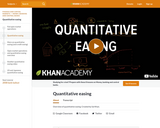
Overview of quantitative easing. Created by Sal Khan.
- Subject:
- Economics
- Social Science
- Material Type:
- Lesson
- Provider:
- Khan Academy
- Provider Set:
- Khan Academy
- Author:
- Sal Khan
- Date Added:
- 07/25/2012

Overview of quantitative easing. Created by Sal Khan.
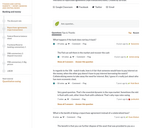
Mechanics of repurchase agreements (repo transactions/loans). Created by Sal Khan.
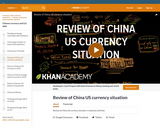
Review of China US currency situation. Created by Sal Khan.

Students listen to a story and answer questions about a family in Central or South America that barters to get the ingredients for chicken sancocho, a kind of stew. The students complete sentences that record the various trades carried out by the family to obtain all of the ingredients for the sancocho. They also participate in trading activities that illustrate money's advantages over barter.
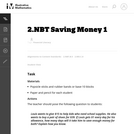
In this challenging instructional task students relate addition and subtraction problems to money and to situations and goals related to saving money.
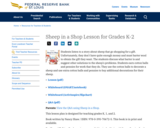
Students listen to a story about sheep that go shopping for a gift. Unfortunately, they don't have quite enough money and must barter wool to obtain the gift they want. The students discuss what barter is and suggest other solutions to the sheep's problems. Students earn cotton balls and pennies for work that they do. They use the cotton balls to decorate a sheep and use extra cotton balls and pennies to buy additional decorations for their sheep.
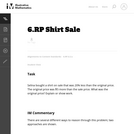
In this task students use ratio and rate reasoning to solve a problem involving a sales item.
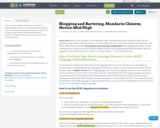
In this activity, students will be given a bundle of Chinese money and will use common Chinese phrases to try to purchase items from the instructor, who will be acting as a shop owner. Students will attempt to convince the shop owner to give them the most items for the best price.
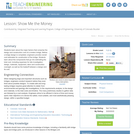
Students learn about the major factors that comprise the design and construction cost of a modern bridge. Before a bridge design is completed, engineers provide overall cost estimates for construction of the bridge. Students learn about the components that go into estimating the total cost, including expenses for site investigation, design, materials, equipment, labor and construction oversight, as well as the trade-off between a design and its cost.

This activity will expose students to different types of currency from Spanish speaking countries. Students will purchase items through an “auction”. Students will practice numbers in Spanish and will also use adjectives to describe items that they can sell and buy. Students will persuade others to buy a product and make deals when purchasing the product.
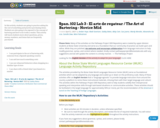
In this activity, students are going to practice asking for the cost of something and practice purchasing items. Students are also going to be exposed to the concept of bartering and how to do it with a vendor. This activity will teach students more about questions, prices, money, numbers, and items that are frequently purchased.

In this activity, students are going to practice asking for the cost of something and practice purchasing items. Students are also going to be exposed to the concept of bartering and how to do it with a vendor.
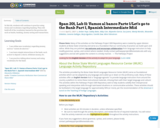
In this lab, students will continue to practice using terms and vocabulary regarding banking. They will build off of the vocabulary learned in the previous lab, such as banks, banking, money saving and transactions.
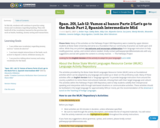
In this lab, students will continue to practice using terms and vocabulary regarding banking. They will build off of the vocabulary learned in the previous lab, such as banks, banking, money saving and transactions.

The purpose of this task is to present students with a context that can naturally be represented with an inequality and to explore the relationship between the context and the mathematical representation of that context; thus, this is an intended as an instructional task.

Students read descriptions of common places to store their money and weigh the benefits and risks of each to decide which one(s) fit their financial goals.
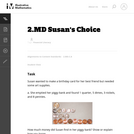
The purpose of this task is to address the concept of opportunity cost through a real world context involving money.
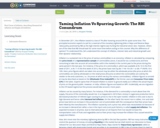
Root Cause of Inflation, describing Demand led inflation and Supply-led inflation.

These word problems about money require students to think in base 10.
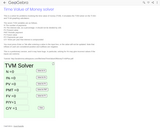
This is a solver for problems involving the time value of money (TVM). It emulates the TVM solver on the TI-83+ and TI-84 graphing calculators. Updated 6 November 2011 to work correctly when I% = 0.